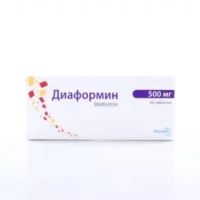Description
Maninil (Glibenclamide) Tablets 5 mg
Ingredients
- Active ingredient: Each tablet contains Glibenclamide 5 mg.
Dosage
- Recommended dosage: The usual starting dose is 2.5 to 5 mg daily, taken with breakfast. Adjustments should be based on blood glucose levels.
Indications
- Maninil tablets are used for type 2 diabetes mellitus when diet alone is insufficient for blood sugar control.
Contraindications
- Avoid use in:
- – Type 1 diabetes
- – Diabetic ketoacidosis
- – Severe liver or kidney dysfunction
- – History of sulfonylurea hypersensitivity
Directions
- Take Maninil tablets as directed by your healthcare provider. Swallow whole with water, usually once daily with breakfast.
Scientific Evidence
- Glibenclamide stimulates insulin release from the pancreas, lowering blood sugar levels. Studies support its efficacy in improving glycemic control in type 2 diabetes.
Additional Information
- Regularly monitor blood glucose levels while on Maninil tablets. Inform your healthcare provider of all medications to prevent interactions.
Pharmacological Effects: Glibenclamide, a sulfonylurea, boosts insulin release from beta cells, reducing blood glucose levels.
Clinical Trials: Research shows glibenclamide effectively lowers fasting plasma glucose levels and improves HbA1c in type 2 diabetes patients.





